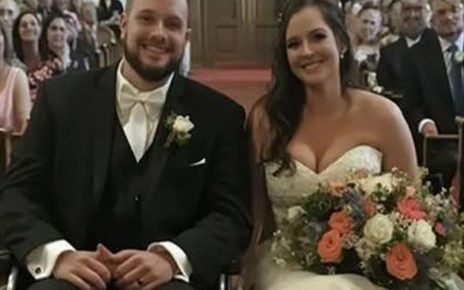Air travel has a way of revealing who we are under pressure. For one man seated in 1A, a routine boarding turned into a quiet test of character and a powerful lesson in passenger rights, first-class etiquette, and what real customer service accountability looks like. What began as a seat dispute grew into a turning point for an entire airline, and eventually, the industry.
This is a true-to-life style story about bias, leadership, and the reforms born from one measured response. If you have ever felt judged at a glance, or watched a situation go wrong while a crowd looked on, this account may feel familiar. It is also a reminder that dignity belongs to everyone in the cabin, from the last row to the first-class bulkhead.
A Seat, An Assumption, And A Crowd That Hit Record
Marcus Washington had settled into 1A with a coffee and a folded business section. His travel clothes were simple, the kind of comfort that makes long flights easier. Across the aisle, a woman approached, certain she had been assigned the same seat. Before anyone could compare boarding passes, she pulled him into the aisle, slipped into 1A, and declared the matter settled.
Phones tilted up. A few passengers began filming. The crew hurried forward to resolve the dispute. With departure minutes away, the flight attendants glanced at Marcus, at his clothing, then at the passenger in the seat. They asked him to move. He held out his paper boarding pass and, with steady politeness, asked them to check.
They did not.
Instead, an unfortunate assumption took hold. The woman stated she was a top-tier loyalty member and long-time customer. A flight attendant apologized to her for the “disruption” and encouraged Marcus to head to economy. He repeated, calmly, that 1A was his assigned seat and that the boarding pass would confirm it. Around them, murmurs rippled. A teenager began a live stream. An older gentleman asked the crew to verify the ticket before making a decision. Still, the pressure to push back from the gate won out over patience.
The Moment Everything Turned
A purser arrived and, without fully reviewing documentation, warned Marcus that security could be called if he did not comply. He remained composed. “Please,” he said, “just check my ticket.”
Airport officers stepped onto the aircraft. They asked for proof, and Marcus handed over his document. It clearly showed 1A. The air changed in an instant. The officers, professional and fair, recommended a simple verification through the airline’s system.
Marcus, still calm, unlocked his phone. On the screen, he did not open a public app. He opened a secure work portal very few people ever see. The display validated what the officers had already begun to suspect. The man they had been urging to relocate was not only properly seated. He was the person ultimately accountable for every seat on that aircraft.
He was the airline’s chief executive.
The cabin fell into a careful silence. The purser’s clipboard slipped. A flight attendant covered her mouth. The passenger in 1A blinked as recognition set in. Marcus did not raise his voice or lecture. He simply clarified the facts, thanked the officers for asking the right questions, and then did the most important thing a leader can do in a difficult moment. He focused on fixing the system, not embarrassing people.
Leadership At Work, One Policy At A Time
In front of a full cabin, Marcus apologized to the customers for the delay and explained what would happen next. He placed two brief calls on speaker to his legal and human resources teams. Not to punish publicly, but to document the incident accurately and to initiate company-wide improvements.
He requested a comprehensive review of anti-bias training, a clear requirement that crew verify boarding passes before making assumptions, and a new process to escalate seating disputes quickly to a system check rather than a quick visual judgment. He asked for an independent passenger advocate at every hub. He authorized significant funding for training and real-time reporting tools. The message was simple. Everyone deserves dignity. Evidence, not appearance, resolves disputes.
For the crew, there were consequences, tailored to role and behavior. The purser faced separation for failing to follow verification procedures after multiple prompts. Others received suspensions paired with training, coaching, and performance plans. One attendant who showed sincere remorse and asked to help train future classes would later return as a powerful voice for change. The passenger who had claimed the seat was reassigned to her correct place and given a choice. A public apology and documented service to organizations that advance fairness, or a formal complaint with her employer. She chose to learn.
It was accountability with a purpose. Not humiliation, but a path forward.
What Accountability Looks Like From Row 2
Several customers nearby spoke up. One gentleman in 2C thanked Marcus for addressing the issue openly rather than privately. A grandmother across the aisle remarked that she had flown for decades and could count on one hand the leaders she had seen take responsibility in real time. The teenager who filmed the incident did not gloat. She posted a simple caption: “He asked them to check the ticket. That’s all. Now the rules will be better for everyone.”
As the aircraft was re-crewed and prepared to depart, Marcus drafted an internal memo. The subject line fit the moment: “Immediate Implementation: Dignity Protocol.” It laid out five core commitments.
Always verify boarding passes and identity in disputes before making requests.
Require a second set of eyes on any situation that might involve bias.
Provide a dedicated passenger advocate reachable in-app within minutes.
Expand training with real-world scenarios taught by people who have learned from mistakes.
Create an independent reporting system with guaranteed follow-up and transparent outcomes.
He allocated a substantial budget to launch the program quickly and maintain it with the seriousness safety programs receive. He asked for quarterly audits by third parties and a dashboard that would be visible to employees at every level. The protocol did not ask for perfection. It established accountability and support, so that when people fall short, the company lifts standards, not voices.
The Flight That Became A Turning Point
When the plane finally took off, something rare had happened. A tense moment had been transformed into progress in front of the very people it affected. The captain offered a brief, sincere apology. Coffee was refilled. Shoulders dropped from around ears. A few phones were put away. The cabin exhaled.
In the weeks that followed, “Dignity Protocol” moved from memo to practice. Incidents related to seating disputes dropped dramatically. Crews felt supported because the policy removed guesswork. Passengers appreciated that verification, not vibe, would decide disputes. The airline invited experts to evaluate training and used their recommendations in full. Other carriers took notice and began their own reviews.
Six months later, the changes were measurable. Customer satisfaction reached new highs. Complaints about inconsistent handling fell sharply. Employees reported greater confidence in de-escalating tense moments because they had a clear, fair checklist to follow. The program became a model, not because it was flashy, but because it was practical and humane.
Redemption, Growth, And Work That Never Ends
The attendant who had first brushed off the boarding pass stood at a training podium, speaking to a classroom of new hires. She did not excuse her earlier choices. She explained them, owned them, and then shared the tools that would have helped her do better that day. “Verification protects everyone,” she told the group. “When we check, we serve.”
The passenger who sat in 1A by mistake completed substantial volunteer work with a local civil-rights organization. She agreed to speak to corporate leaders about assumptions, and what it feels like to be certain you are right, only to learn you were not. She did not try to rewrite the story. She chose to grow from it.
And the teenager with the live stream? She received a scholarship to study journalism. Her short documentary, “Seat 1A,” became required viewing in several customer-service programs, not because it was dramatic, but because it showed the exact moment a company chose transparency over spin.
For Every Traveler Who Has Ever Been Second-Guessed
If you have ever been waved past without a glance at your ticket, this story is for you. If you have ever felt a decision turn on a quick look instead of a careful check, this story is for you. And if you have ever worked on the front lines, juggling schedules, safety, and emotions, this story is for you as well.
The lesson from 1A is not that people should fear consequences. It is that everyone does better when the path is clear, the training is strong, and dignity is the nonnegotiable standard.
Marcus Washington did not fix everything in a single afternoon. No leader can. But he did something that leaders at every level can do. He turned a difficult moment into a better system. He chose education with accountability. He made it easier for the next crew member to do the right thing in the next tight boarding window.
The next time you fly, remember the only question that should decide a seat dispute. Not who looks the part. Who holds the boarding pass. That simple standard honors every traveler, from the last row to 1A.
Practical Takeaways For Travelers And Crews
Keep your boarding pass handy until seated and doors are closed.
If a dispute arises, ask for verification, not opinions. A quick system check settles most issues in seconds.
Support front-line crews by letting them do their jobs. Calm, clear information helps everyone.
For airline teams, a second set of eyes is not a delay. It is protection for customers and staff alike.
For leaders, publish the process. What is visible, improves.
When dignity is the protocol, travel feels human again.




